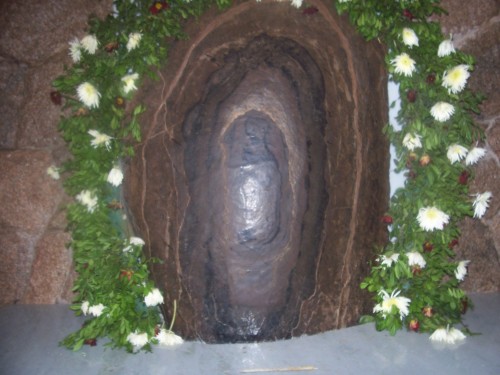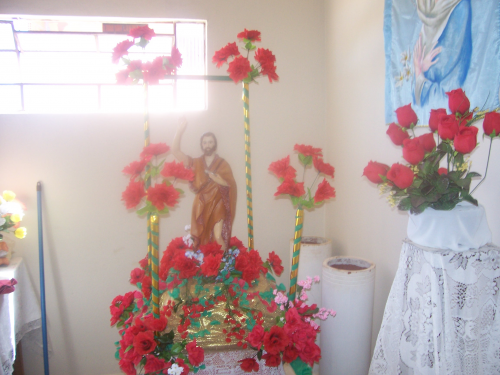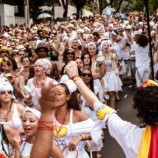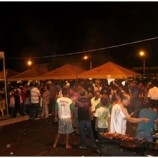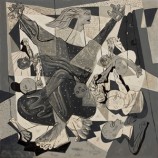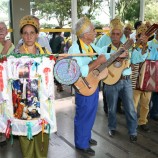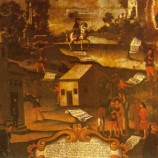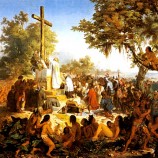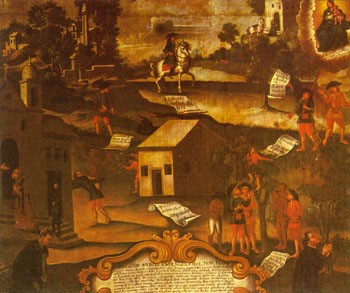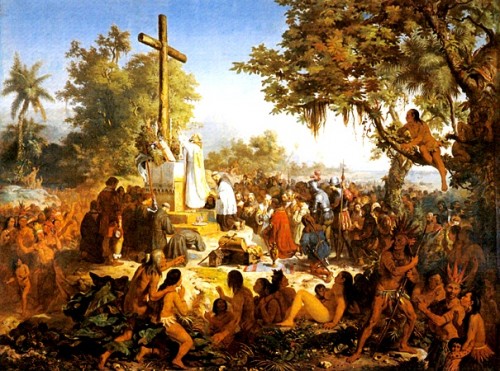II – Santa da Pedra, Pilgrimage and Popular Devotion
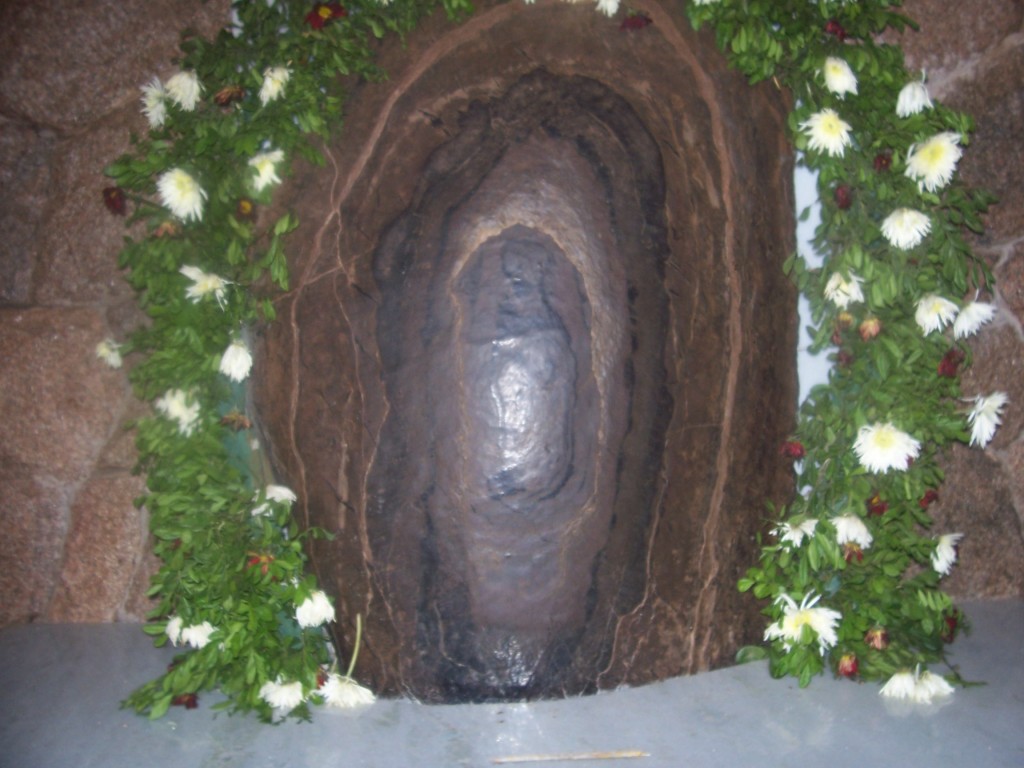
From the series Religious Pilgrimages in the Great Backlands
The tiny district of Santa da Pedra, in the county of São João do Pacuí, Northern Minas Gerais state, each year becomes one of the most bustled villages in the region when thousands of visitors pilgrimage in from all over the state. Circulating its streets they head for the town’s small church to give thanks for the grace and blessings granted through the intercession of a feminine, or masculine, saint, known in the region as Santa da Pedra, represented by a figure of black stone, an image found in a gully near the Sumidouro Creek, close by the district’s headquarters.
This festival in honor of Santa da Pedra always begins in the last week of August, but the pilgrimages of visitation extend through the month of September when hundreds of pilgrims, in search of miracles, come to celebrate the centennial story of devotion to a miraculous santo or santa who appeared on the stone and where since then innumerous reports of miracles have occurred throughout the location’s peregrine history.
According to the oldest residents, almost a century ago when the district was still just a farm, a few of the towns people were searching for a cow which had run away from the rest of the herd when they realized that the animal had stopped beside a stone and would not, in any way, move itself away from that particular spot. When they went in for a closer look they noticed the image of a santo or santa set in to the face of the stone. At the sight of this phenomenon, the pedestrians had no doubt that it was either a miracle or something mysterious and so carried the saint to their benefactor. The next day, when they woke up, they could not find a trace of the stone on the farm. The material had mysteriously returned to the exact same place where it had been found. Many times over the stone was attempted to be taken away from its resting place but it always ended up appearing back where it was first discovered. The only way to remove the stone from its resting place was to build a chapel and an altar where the stone was placed upon and where it is revered in song and prayer amid prayer requests and gratitude. It remains there until today. The old chapel was recently reformed and a new church was erected in its place with new environments to accommodate the pilgrims and visitors who multiply in numbers with each coming year.
The most curious detail is that although the district and the stone itself are known in the feminine form, the devotion is to a male saint. The image formed in the Stone is attributed to St. John the Baptist, the saint beloved by the popular religiosity and venerated by the people of the region due to their popular Catholicism and where on every 24th of July, for centuries now he is celebrated with prayer, follies, cultural dance, fireworks and bonfires.
São João do Pacuí County, with its political emancipation on the 10th of December 1996, dismembered from the county of Coração de Jesus, is inserted in the Minas Gerais Backlands tourist circuit. Included in the region’s territory is a unprecedented speleological parkland facing towering limestone heights which guard a remarkable formation constructed by nature along the eons, an inexhaustible source for archeological research which faithfully reports the evolution of mankind within its many caves which record the passage of prehistoric man, marked by its ancient signalizations and unidentified multicolored drawings. The region is full of caves, with special emphasis on the cave of Espigão, meaning “Spigot”, within the county of Coração de Jesus where a complete skeleton was found dating approximately 10,000 years old, and also that of Sumitumba, an arm’s throw away from where a millennial indigenous cemetery was discovered.
 The pilgrimage to Santa da Pedra is permeated with legends, history and cultural facts which sustain the peoples’ faith of the Minas Gerais backlands of the Pacuí River Valley, who remain in hope of better days despite the fact of being historically fraught with human suffering due to the lack of fair public policies and by the social gaps between the rich and the poor. Traditionally, the seekers keep their own pace on the pilgrimage. They often roam freely getting to know the place, visit the saint, kiss the altar or the objects connected to the miraculous image, go to the church, light candles, visit the Room of Miracles, say their individual prayers and manifest their devotions. In Santa da Pedra, as is with other pilgrimage locations, the principle gesture is to touch the stone with both hands while making requests and giving thanks. And so, it is certainly within the Creator’s design that, in this context of faith, devotion, tradition and popular religion that man’s mysterious past world is slowly revealed, showing how faith transcends the limits of time and of human rationality.
The pilgrimage to Santa da Pedra is permeated with legends, history and cultural facts which sustain the peoples’ faith of the Minas Gerais backlands of the Pacuí River Valley, who remain in hope of better days despite the fact of being historically fraught with human suffering due to the lack of fair public policies and by the social gaps between the rich and the poor. Traditionally, the seekers keep their own pace on the pilgrimage. They often roam freely getting to know the place, visit the saint, kiss the altar or the objects connected to the miraculous image, go to the church, light candles, visit the Room of Miracles, say their individual prayers and manifest their devotions. In Santa da Pedra, as is with other pilgrimage locations, the principle gesture is to touch the stone with both hands while making requests and giving thanks. And so, it is certainly within the Creator’s design that, in this context of faith, devotion, tradition and popular religion that man’s mysterious past world is slowly revealed, showing how faith transcends the limits of time and of human rationality.
Related Articles


